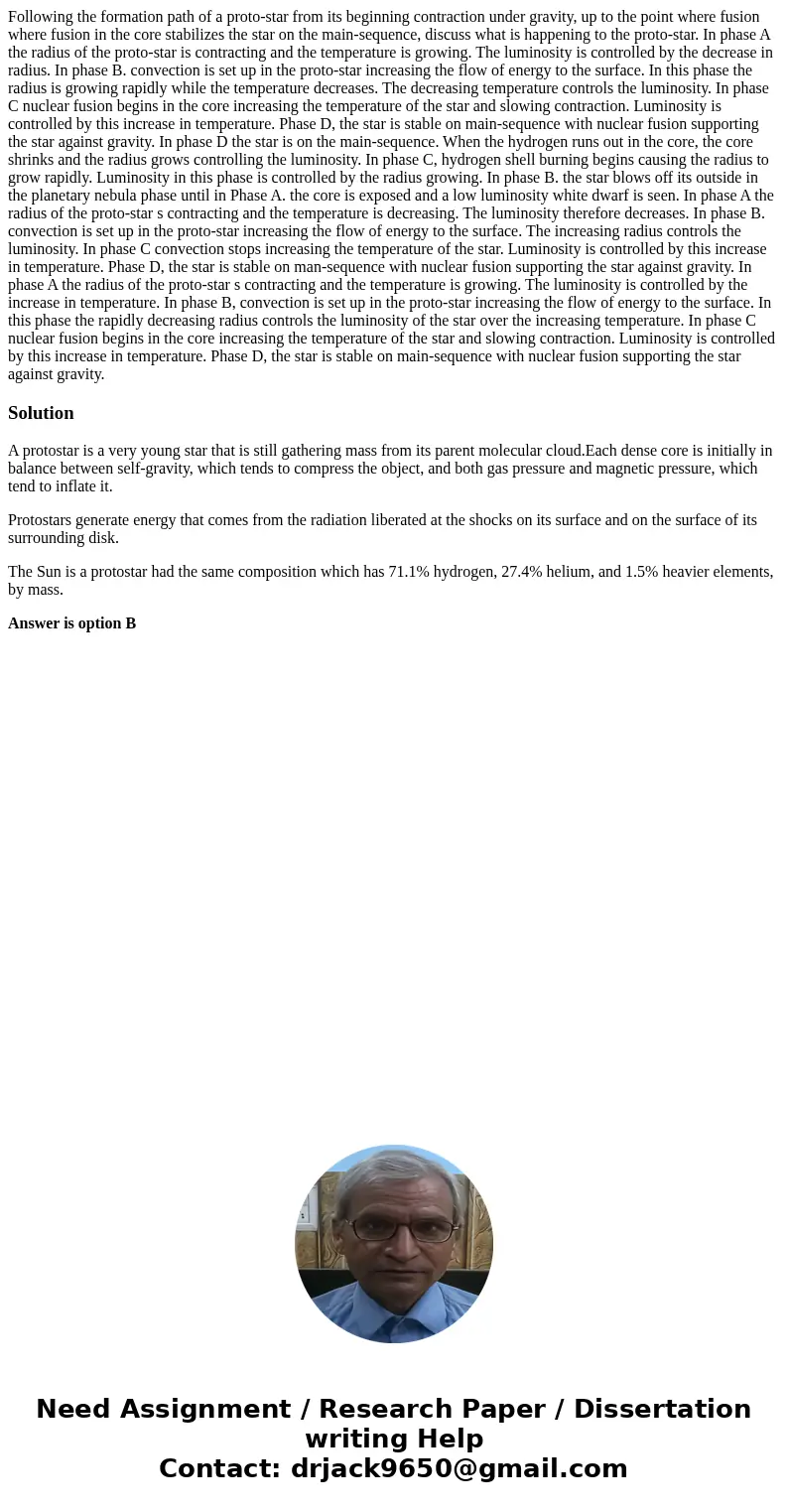Following the formation path of a protostar from its beginni
Following the formation path of a proto-star from its beginning contraction under gravity, up to the point where fusion where fusion in the core stabilizes the star on the main-sequence, discuss what is happening to the proto-star. In phase A the radius of the proto-star is contracting and the temperature is growing. The luminosity is controlled by the decrease in radius. In phase B. convection is set up in the proto-star increasing the flow of energy to the surface. In this phase the radius is growing rapidly while the temperature decreases. The decreasing temperature controls the luminosity. In phase C nuclear fusion begins in the core increasing the temperature of the star and slowing contraction. Luminosity is controlled by this increase in temperature. Phase D, the star is stable on main-sequence with nuclear fusion supporting the star against gravity. In phase D the star is on the main-sequence. When the hydrogen runs out in the core, the core shrinks and the radius grows controlling the luminosity. In phase C, hydrogen shell burning begins causing the radius to grow rapidly. Luminosity in this phase is controlled by the radius growing. In phase B. the star blows off its outside in the planetary nebula phase until in Phase A. the core is exposed and a low luminosity white dwarf is seen. In phase A the radius of the proto-star s contracting and the temperature is decreasing. The luminosity therefore decreases. In phase B. convection is set up in the proto-star increasing the flow of energy to the surface. The increasing radius controls the luminosity. In phase C convection stops increasing the temperature of the star. Luminosity is controlled by this increase in temperature. Phase D, the star is stable on man-sequence with nuclear fusion supporting the star against gravity. In phase A the radius of the proto-star s contracting and the temperature is growing. The luminosity is controlled by the increase in temperature. In phase B, convection is set up in the proto-star increasing the flow of energy to the surface. In this phase the rapidly decreasing radius controls the luminosity of the star over the increasing temperature. In phase C nuclear fusion begins in the core increasing the temperature of the star and slowing contraction. Luminosity is controlled by this increase in temperature. Phase D, the star is stable on main-sequence with nuclear fusion supporting the star against gravity.
Solution
A protostar is a very young star that is still gathering mass from its parent molecular cloud.Each dense core is initially in balance between self-gravity, which tends to compress the object, and both gas pressure and magnetic pressure, which tend to inflate it.
Protostars generate energy that comes from the radiation liberated at the shocks on its surface and on the surface of its surrounding disk.
The Sun is a protostar had the same composition which has 71.1% hydrogen, 27.4% helium, and 1.5% heavier elements, by mass.
Answer is option B

 Homework Sourse
Homework Sourse